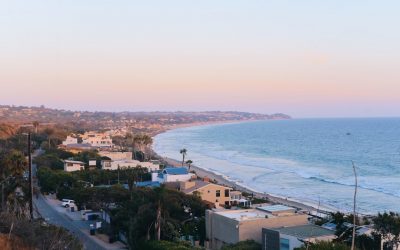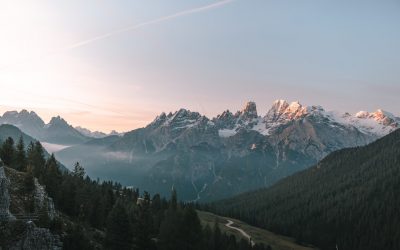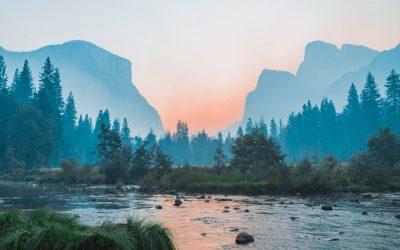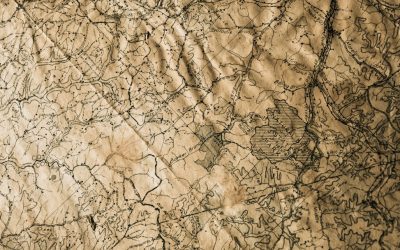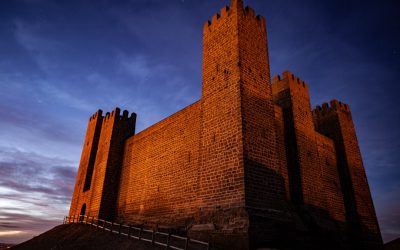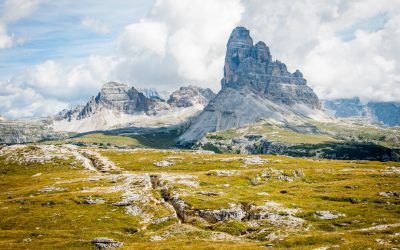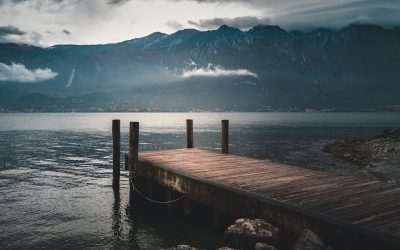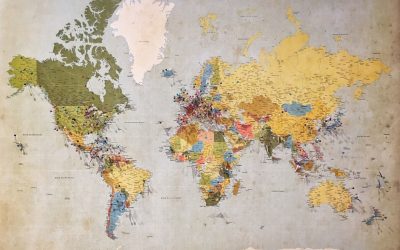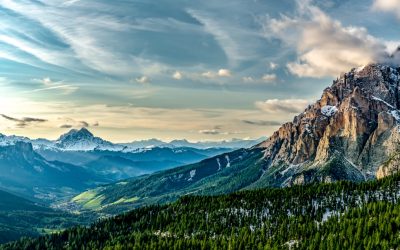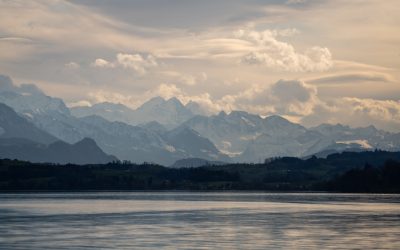World Geography
Geography is the study of the Earth’s landscapes, environments, and the relationships between people and their surroundings. It encompasses both the physical aspects of the Earth, such as its landforms, bodies of water, and climate, as well as the human aspects, including population distribution, cultures, and economies. World geography is a broad field that seeks to understand the complexities of our planet and how humans interact with it. By studying world geography, we can gain a deeper appreciation for the diversity of our planet and the interconnectedness of its various regions.
Geography is a multidisciplinary field that draws on elements of physical science, social science, and humanities. It involves the use of maps, spatial analysis, and geographic information systems (GIS) to understand the Earth’s surface and the processes that shape it. World geography also encompasses the study of human geography, which examines the ways in which people and their activities are distributed across the Earth. By understanding world geography, we can better appreciate the environmental, cultural, and economic challenges facing different regions of the world. This knowledge is crucial for addressing global issues such as climate change, resource management, and international development.
The Five Oceans and Seven Continents
The Earth’s surface is divided into five major oceans: the Pacific, Atlantic, Indian, Southern (or Antarctic), and Arctic Oceans. These vast bodies of water play a crucial role in regulating the Earth’s climate and supporting diverse marine ecosystems. The oceans also serve as important transportation routes and a source of food and other natural resources for human societies around the world.
In addition to the oceans, the Earth’s landmasses are divided into seven continents: Africa, Antarctica, Asia, Europe, North America, Australia (or Oceania), and South America. Each continent has its own unique physical and cultural characteristics, shaped by millions of years of geological processes and human history. From the deserts of Africa to the rainforests of South America, the continents offer a rich tapestry of landscapes and environments for exploration and study.
Major Mountain Ranges and Deserts
The Earth’s surface is also marked by major mountain ranges and deserts that have shaped the planet’s physical and cultural landscapes. The Himalayas, for example, are the highest mountain range in the world and are home to diverse ecosystems and cultures in countries such as India, Nepal, and Bhutan. The Andes in South America, the Rockies in North America, and the Alps in Europe are other prominent mountain ranges that have influenced human settlement patterns and economic activities.
Deserts cover about one-third of the Earth’s land surface and are characterized by low precipitation and extreme temperatures. The Sahara Desert in Africa is the largest hot desert in the world, while the Gobi Desert in Asia is one of the largest cold deserts. Deserts are not only home to unique flora and fauna but have also been important trade routes and cultural crossroads throughout history.
Climate Zones and Biomes
The Earth’s climate is influenced by a variety of factors, including latitude, altitude, ocean currents, and prevailing winds. As a result, the planet is divided into different climate zones, each with its own characteristic weather patterns and ecosystems. The equator, for example, experiences a tropical climate with high temperatures and heavy rainfall, while the polar regions have a cold and dry climate.
These climate zones give rise to different biomes, or large ecological areas characterized by distinct plant and animal communities. The tropical rainforest biome, found near the equator, is home to a diverse array of species and is vital for regulating the Earth’s climate. The grasslands biome, found in regions such as the African savannah and North American prairies, supports grazing animals and has been important for human agriculture throughout history.
Human Geography and Population Distribution
Human geography examines the ways in which people and their activities are distributed across the Earth’s surface. It encompasses topics such as population growth, migration patterns, urbanization, and cultural diversity. Understanding human geography is crucial for addressing global challenges such as poverty, inequality, and environmental degradation.
Population distribution is uneven across the world, with some regions experiencing rapid population growth while others are declining. The majority of the world’s population lives in Asia, particularly in countries such as China and India. Urban areas are also growing rapidly, with more than half of the world’s population now living in cities. This trend has significant implications for infrastructure development, resource management, and social inequality.
Historical and Cultural Geography
Historical geography examines how human activities have shaped the Earth’s landscapes over time. It explores topics such as colonialism, trade routes, and the rise and fall of empires. Cultural geography focuses on how human cultures have developed in different regions of the world and how they interact with their environments.
The Silk Road, for example, was an ancient trade route that connected China with Europe and facilitated the exchange of goods, ideas, and technologies across Eurasia. This historical trade route had a profound impact on the development of cultures and economies along its path. Similarly, cultural geographers study how different societies have adapted to their environments through practices such as agriculture, architecture, and religious beliefs.
The Importance of Geographic Knowledge
Geographic knowledge is crucial for addressing global challenges such as climate change, resource management, and international development. By understanding world geography, we can better appreciate the environmental, cultural, and economic challenges facing different regions of the world. This knowledge is crucial for addressing global issues such as climate change, resource management, and international development.
Geographic knowledge also helps us to understand our interconnectedness with other regions of the world. By studying world geography, we can gain a deeper appreciation for the diversity of our planet and the interconnectedness of its various regions. This understanding can foster a sense of global citizenship and empathy for people from different cultures and backgrounds.
In conclusion, world geography is a complex and multifaceted field that encompasses both physical and human aspects of the Earth’s landscapes. By studying world geography, we can gain a deeper appreciation for the diversity of our planet and the interconnectedness of its various regions. This knowledge is crucial for addressing global challenges such as climate change, resource management, and international development. It also helps us to understand our interconnectedness with other regions of the world and fosters a sense of global citizenship.
FAQs
What is world geography?
World geography is the study of the Earth’s landscapes, environments, and the relationships between people and their environments. It encompasses the physical features of the Earth, as well as the human activity that takes place on it.
Why is world geography important?
World geography is important because it helps us understand the world around us. It provides insights into the physical and human processes that shape our planet, and helps us make informed decisions about how to interact with our environment.
What are the main branches of world geography?
The main branches of world geography include physical geography, which focuses on the Earth’s natural features and processes, and human geography, which examines the relationships between people and their environments.
How does world geography impact our daily lives?
World geography impacts our daily lives in numerous ways, from influencing the weather and climate we experience, to shaping the availability of natural resources and influencing the distribution of populations and cultures around the world.
What are some key concepts in world geography?
Key concepts in world geography include location, place, human-environment interaction, movement, and region. These concepts help geographers understand and interpret the world around them.
Population Density of Antigua and Barbuda
Antigua and Barbuda, a small island nation located in the Caribbean, has a population density that is of great importance to understand. Population density refers to the number of people living in a specific area, usually measured in square kilometers or square miles. Understanding population density is crucial as it provides insights into the distribution of people within a country, which in turn can have significant implications for social, economic, and environmental factors. Summary Antigua and Barbuda has a population density of 223 people per square kilometre. The country is located in the eastern Caribbean, consisting of two main islands and several smaller ones. Population growth in Antigua and Barbuda has been influenced by colonialism, slavery, and migration. As of 2021, the population of Antigua and Barbuda is estimated to be around 98,000 people. Factors such as limited land availability and economic opportunities contribute to the uneven distribution of population between urban and rural areas. Understanding the Geographical Location of Antigua and Barbuda Antigua and Barbuda consists of two main islands, Antigua and Barbuda, along with several smaller islands. It is located in the eastern Caribbean Sea, southeast of Puerto Rico. The islands are part of the Lesser Antilles, which are a group of islands that form an arc between the Greater Antilles and South America. The geographical location of Antigua and Barbuda has a direct impact on its population density. Being situated in the Caribbean Sea, Antigua and Barbuda have a tropical climate with warm temperatures year-round. This makes the islands an attractive destination for tourists, which in turn can influence population density. Additionally, the islands’ location also...
Terrain and Topography of Antigua and Barbuda: mountains, valleys, and plains.
Antigua and Barbuda, located in the eastern Caribbean, is a stunning island nation known for its beautiful beaches and crystal-clear waters. However, beyond its pristine coastline lies a diverse and fascinating terrain that is worth exploring. From its mountainous regions to its valleys and coastal plains, Antigua and Barbuda’s topography plays a crucial role in shaping the island’s climate, biodiversity, and agricultural industry. Understanding the island’s geography is essential for sustainable development and conservation efforts. Summary Antigua and Barbuda’s terrain is diverse, with mountainous regions, valleys, coastal plains, and unique karst topography. The mountainous regions of Antigua and Barbuda offer stunning views and are home to a variety of flora and fauna. The valleys of Antigua and Barbuda are low-lying areas that are important for agriculture and provide habitat for wildlife. The coastal plains of Antigua and Barbuda are home to many of the island’s towns and cities, as well as important ecosystems like mangroves and coral reefs. Antigua and Barbuda’s topography plays a significant role in shaping the climate and weather patterns of the islands. The Mountainous Regions of Antigua and Barbuda Antigua and Barbuda may be known for its beaches, but it also boasts some impressive mountainous areas. The highest point on the island of Antigua is Mount Obama, formerly known as Boggy Peak, which stands at 402 meters (1,319 feet) above sea level. This mountain offers breathtaking views of the surrounding landscape and is a popular hiking destination for both locals and tourists. In addition to Mount Obama, there are several other notable mountains on the island, including Signal Hill and Shirley Heights. These mountains provide...
Cultural or Historical Sites of Antigua and Barbuda: Important Cultural Landmarks or Historical Sites In Antigua and Barbuda
Antigua, a small island in the Caribbean, is known for its stunning beaches and crystal-clear waters. However, beyond its natural beauty, Antigua also boasts a rich history that is worth exploring. From colonial architecture to historic naval bases, the island is home to numerous historical sites that offer a glimpse into its past. When visiting Antigua, it is important to take the time to explore these sites and learn about the island’s fascinating history. Summary Nelson’s Dockyard is a UNESCO World Heritage Site and a historic naval base. Betty’s Hope is the oldest sugar plantation on Antigua. St. John’s Cathedral is an iconic landmark of colonial architecture. Devil’s Bridge is a natural wonder and symbol of African slave resistance. The Museum of Antigua and Barbuda preserves the islands’ cultural heritage. Nelson’s Dockyard: A Historic Naval Base and UNESCO World Heritage Site One of the most significant historical sites in Antigua is Nelson’s Dockyard. This historic naval base was established in the 18th century and played a crucial role in the British Navy’s operations in the Caribbean. Today, it is a UNESCO World Heritage Site and a popular tourist attraction. Touring Nelson’s Dockyard allows visitors to step back in time and experience what life was like during the height of the British Empire. The dockyard is home to numerous restored buildings, including the Admiral’s House, which now serves as a museum showcasing the history of the dockyard. Visitors can also explore the ruins of old warehouses and workshops, giving them a sense of the bustling activity that once took place here. Betty’s Hope: The Oldest Sugar Plantation on Antigua Sugar...
Republic of Angola: Natural Resources, Diamond, Mineral Resources and Mining Industry
Republic of Angola: Natural Resources, Diamond, Mineral Resources and Mining Industry Angola, officially known as the Republic of Angola, is a nation rich in natural resources, boasting vast reserves of oil, diamonds, and various minerals. This abundance has positioned Angola as a significant player in the global mining industry. Understanding the natural resources of Angola is crucial for comprehending its economic landscape and the challenges and opportunities that come with resource wealth. Outline What Are Angola’s Primary Natural Resources? How Has Diamond Mining Shaped Angola’s Economy? The Role of Oil in Angola’s Economic Development Exploring Angola’s Iron Ore Reserves The Impact of Natural Resources on the Angolan Economy Challenges in Angola’s Mining Industry The Influence of Portuguese Colonisation on Resource Extraction Post-Civil War Recovery and Resource Management Angola’s Position in Sub-Saharan Africa‘s Resource Landscape Future Prospects for Angola’s Natural Resource Sector 1. What Are Angola’s Primary Natural Resources? Angola is endowed with a variety of natural resources, including petroleum, diamonds, iron ore, phosphates, copper, feldspar, gold, bauxite, and uranium. These resources have been central to the country’s economic activities and export revenues. The petroleum sector is particularly significant, contributing a substantial portion to Angola’s GDP and government revenue. Diamonds also play a crucial role, with Angola being one of the largest producers of diamonds in Africa. The mining of iron ore and other minerals further diversifies the country’s resource base. 2. How Has Diamond Mining Shaped Angola’s Economy? Diamond mining has been a cornerstone of Angola’s economy, especially since the end of the civil war. The country is among the top producers of diamonds globally, with significant...
Political Boundaries of Angola: Provinces, Districts, or Historical Boundaries.
Angola, located in Southern Africa, is a country with rich history and diverse cultures. Understanding Angola’s political boundaries is crucial for comprehending its governance, history, and the challenges faced by its people. Angola shares borders with several countries, including Namibia, Zambia, the Democratic Republic of Congo, and the Republic of Congo. The Atlantic Ocean forms Angola’s western boundary. These political boundaries have played a significant role in shaping Angola’s history and present-day circumstances. Summary Angola’s political boundaries have evolved over time, with the country currently divided into 18 provinces and 164 municipalities. The provincial divisions have historical and cultural significance, with some dating back to the colonial era and others established after independence. Districts are the smallest administrative units in Angola, responsible for providing basic services and governance to local communities. Angola’s historical boundaries have been shaped by colonialism, civil war, and international disputes, with some areas still contested today. The impact of Angola’s political boundaries on its people can be seen in issues such as access to resources, ethnic tensions, and regional disparities in development. Angola’s Provincial Divisions: History and Significance Angola is divided into 18 provinces, each with its own unique characteristics and cultural heritage. The provincial divisions in Angola have a long historical background that dates back to the colonial era. During the Portuguese colonial rule, Angola was divided into three major regions: Angola, Benguela, and Mozambique. These regions were further divided into districts and municipalities. The significance of provincial divisions in Angola’s governance lies in the decentralization of power and resources. Each province has its own government and administration, allowing for local decision-making and development...
Cultural or Historical Sites of Angola: Important Cultural Landmarks or Historical Sites In Angola
Angola, located on the western coast of Africa, is a country rich in cultural and historical sites. From ancient ruins to colonial architecture, Angola’s heritage tells the story of its diverse past. Preserving these sites is crucial for future generations to understand and appreciate the country’s history and cultural identity. Summary Angola has a rich cultural and historical heritage, with many sites of significance. Luanda, the capital city, has a fascinating history that reflects Angola’s colonial past. The Kongo Kingdom played a significant role in Angola’s history and is still celebrated today. The Great Zimbabwe ruins in Angola are shrouded in mystery and intrigue. The legacy of Portuguese colonialism is still evident in Angola’s culture and architecture. The Rich History of Angola’s Capital City, Luanda Luanda, the capital city of Angola, has a fascinating history that dates back to pre-colonial times. Originally inhabited by the Ambundu people, Luanda became an important trading post for the Portuguese in the 16th century. Over the centuries, it grew into a bustling city with a mix of African, European, and Brazilian influences. One of the key historical sites in Luanda is Fortaleza de São Miguel, a fortress built by the Portuguese in the 16th century to protect their interests in the region. Today, it serves as a museum that showcases the city’s colonial past. Another important site is the National Museum of Slavery, which documents Angola’s role in the transatlantic slave trade and educates visitors about this dark chapter in history. The Significance of the Kongo Kingdom in Angola’s History The Kongo Kingdom played a significant role in shaping Angola’s history. Established in...
Climate Zones of Angola: Different Climate Regions Of Angola
Angola, located on the west coast of southern Africa, is a country known for its diverse geography and climate. The country is characterized by a wide range of climate zones, each with its own unique characteristics and ecosystems. From tropical savannas to coastal deserts, Angola’s climate zones offer a variety of landscapes and opportunities for both its people and its economy. Summary Angola has a diverse range of climate zones, including tropical savanna, semi-arid, subtropical highland, humid subtropical, and coastal desert. The tropical savanna region covers most of Angola and experiences a wet and dry season, with temperatures ranging from 20-30°C. The semi-arid region is located in the south and east of Angola and experiences hot and dry conditions, with temperatures reaching up to 40°C. The subtropical highland region has cooler temperatures due to its higher altitude, with temperatures ranging from 10-20°C. The humid subtropical region experiences high levels of rainfall and humidity, with temperatures ranging from 20-30°C. Factors influencing Angola’s climate zones include latitude, altitude, ocean currents, and prevailing winds. Angola’s climate zones have a significant impact on agriculture and the economy, with the tropical savanna region being the most suitable for farming. Climate change is affecting Angola’s climate zones, with increased temperatures and changes in rainfall patterns. Angola’s diverse climate zones are significant for the country’s biodiversity and provide opportunities for tourism and economic development. Tropical savanna climate region The tropical savanna climate region in Angola is characterized by hot temperatures and distinct wet and dry seasons. This climate zone covers a large portion of the country, particularly in the central and northern regions. Cities such as...
Terrain and Topography of Angola: mountains, valleys, and plains.
Angola, located on the western coast of Southern Africa, is a country known for its diverse and stunning terrain. From majestic mountains to vast plains, Angola’s topography offers a wealth of natural beauty and resources. Understanding Angola’s terrain and topography is crucial for various reasons, including agriculture, economy, and tourism. By exploring the different aspects of Angola’s geography, we can gain a deeper appreciation for the country’s natural wonders and the opportunities they present. Summary Angola’s terrain is diverse and varied, with mountains, valleys, plains, and unique geology. The majestic mountains of Angola offer stunning views and opportunities for exploration. The valleys of Angola are rich in biodiversity and offer unique opportunities for agriculture and tourism. The vast plains of Angola are home to a variety of wildlife and offer opportunities for ranching and agriculture. Angola’s unique geology, including diamonds and oil reserves, has played a significant role in the country’s economy. The Majestic Mountains of Angola Angola is home to several mountain ranges that add to the country’s breathtaking landscape. The most prominent mountain range is the Serra da Chela, located in the southwest region of Angola. This range stretches for approximately 200 kilometers and reaches elevations of up to 2,620 meters at its highest peak, Mount Moco. Mount Moco is not only the highest peak in Angola but also the highest in all of Southern Africa. Another notable mountain range in Angola is the Serra da Leba, famous for its stunning winding road that offers panoramic views of the surrounding valleys. The range reaches elevations of up to 1,845 meters at its highest point. These mountains have...
Population Density of Angola
Angola, located in Southern Africa, is a country with a diverse population and varying population density across its regions. Understanding population density is crucial for policymakers and stakeholders as it helps in planning and implementing effective policies and programs. Population density refers to the number of people living in a specific area, usually measured in terms of persons per square kilometer. By analyzing population density, we can gain insights into the distribution of resources, infrastructure needs, and social services required to meet the needs of the population. Summary Angola has a population density of 26 people per square kilometer. Angola’s population has grown rapidly since the 1950s due to improved healthcare and infrastructure. The majority of Angola’s population is concentrated in the northern and coastal regions. Urbanization has led to a significant increase in population density in Angola’s major cities. Angola’s high population density poses challenges for managing resources and providing basic services. Historical Overview of Angola’s Population Angola has a rich history that has influenced its population growth over the years. The country experienced significant population growth during the colonial period when it was under Portuguese rule. The Portuguese brought in large numbers of settlers and forced laborers from other African countries, resulting in an increase in the population. However, this growth was not evenly distributed across the country, with coastal areas experiencing higher population densities compared to the interior regions. Current Population Trends in Angola As of 2021, Angola has an estimated population of around 33 million people. The country has experienced steady population growth over the years, with an average annual growth rate of around 2%....
Political Boundaries of Andorra: Provinces, Districts, or Historical Boundaries.
Andorra, a small landlocked country in the Pyrenees Mountains, is known for its stunning landscapes and unique political structure. With a total area of just 468 square kilometers, Andorra is one of the smallest countries in Europe. Despite its size, Andorra has a rich history and a distinct identity that is shaped by its political boundaries. Political boundaries play a crucial role in defining a country’s identity. They determine the territory over which a government has jurisdiction and control, and they help to establish a sense of belonging and unity among the people who live within those boundaries. In the case of Andorra, its political boundaries have been instrumental in shaping its governance, economy, and culture. Summary Andorra is a small country located in the Pyrenees Mountains between France and Spain. The country is divided into seven provinces, each with its own unique characteristics and attractions. Andorra’s districts are important administrative divisions that help to govern the country and provide services to its citizens. The historical boundaries of Andorra have changed over time, reflecting the country’s complex political history. Andorra’s borders with France and Spain have played a significant role in shaping the country’s culture, economy, and political landscape. The Provinces of Andorra: A Brief Overview Andorra is divided into seven provinces, each with its own unique characteristics and significance. These provinces are Canillo, Encamp, Ordino, La Massana, Andorra la Vella, Sant Julià de Lòria, and Escaldes-Engordany. Canillo is the largest province in terms of land area and is known for its picturesque landscapes and ski resorts. Encamp is located in the central part of Andorra and is home...
Natural Resources of Andorra: Where Natural Resources are Located in Andorra
Exploring the Natural Resources of Andorra: A Unique Insight into the Geography and Economy of a Mountain Nation Nestled in the eastern Pyrenees between France and Spain, Andorra is a landlocked country with an intriguing geographical and economic profile. Though often overlooked due to its small land area, Andorra is rich in unique natural features and cultural history. This article explores the natural resources of Andorra, how they influence the economy of Andorra, and what makes the geography of Andorra distinct. Whether you’re a student, researcher, or simply curious, this deep dive into the natural resource potential and terrain of Andorra is well worth the read. Article Outline What Makes the Geography of Andorra Unique? How Do Andorra’s Natural Resources Shape Its Economy? What Role Does Tourism Play in Andorra’s Development? Is Andorra Rich in Water Resources? Does Andorra Have Any Valuable Mineral Resources? How Has the History of Andorra Shaped Its Land Use? How Do Andorrans Benefit from the Country’s Geography? What Is the Role of the Andorran Government in Managing Resources? How Is the Economy of Andorra Diversified? What Are the Main Challenges Andorra Faces? What Makes the Geography of Andorra Unique? Andorra is a small, landlocked country in the eastern Pyrenees mountain range, bordered by France and Spain. Its mountainous landscape is dominated by deep valleys, rugged peaks, and rivers that shape its physical and economic structure. The geography of Andorra defines much of its identity. Covering only 468 square kilometers of land area, Andorra has very limited arable land. The valley systems formed by rivers like the Valira River support the...
Terrain and Topography of Andorra: mountains, valleys, and plains.
Andorra, a small landlocked country nestled in the Pyrenees Mountains between France and Spain, boasts a unique terrain and topography that sets it apart from its neighboring countries. With an area of just 468 square kilometers, Andorra is one of the smallest countries in Europe. Despite its size, Andorra’s landscape is diverse and captivating, offering visitors a wide range of natural wonders to explore. The terrain and topography of Andorra have played a significant role in shaping the country’s landscape. The country is characterized by its rugged mountains, deep valleys, expansive plains, and even glaciers. These geographical features have not only influenced the climate and vegetation of the region but also shaped the culture, history, and economy of Andorra. Summary Andorra’s unique terrain and topography make it a fascinating destination for tourists. Mountains dominate Andorra’s landscape, with the Pyrenees connecting it to France and Spain. Valleys provide low-lying areas in Andorra, with the Madriu-Perafita-Claror Valley being a UNESCO World Heritage Site. Plains are lesser-known areas of Andorra, with the Gran Valira Valley being the main river basin. Glaciers add to Andorra’s frozen terrain, while its climate and vegetation are influenced by its terrain and topography. Mountains: The Dominant Feature of Andorra’s Landscape Mountains dominate the landscape of Andorra, with the country being home to several mountain ranges. The highest peak in Andorra is Coma Pedrosa, standing at an impressive 2,942 meters above sea level. Other notable mountain ranges include the Pyrenees Mountains, which form the natural border between France and Spain. The mountains hold great significance in Andorra’s culture and history. They have provided a natural barrier that has...
